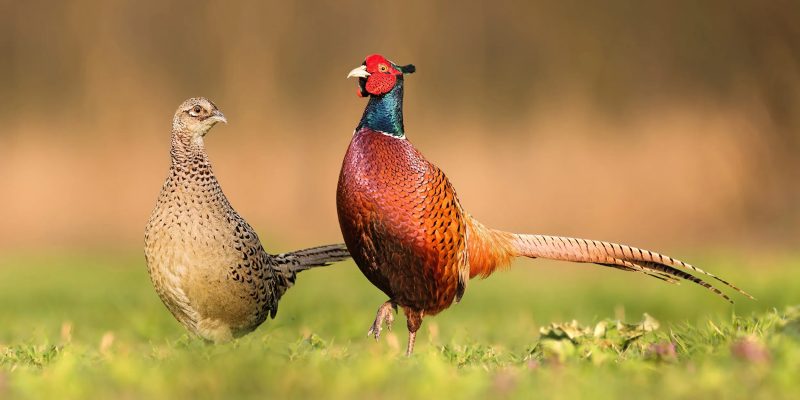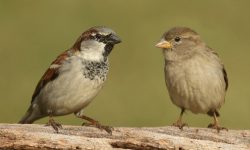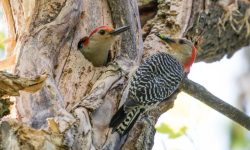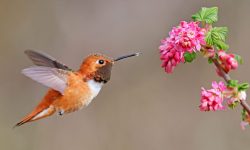Pheasants are ground-dwelling birds known for their vivid plumage and adaptable diet. Whether roaming wild meadows or living in captivity, pheasants thrive on a wide variety of foods. Understanding what they eat not only helps in conservation and habitat management but also improves their care in domestic or game-farming settings.
In this article, we explore the 9 favorite foods that pheasants love the most, shedding light on their natural dietary habits and nutritional preferences.

1. Grains and Seeds: The Staple of Their Diet
Golden Fields and Hidden Feasts
When the days grow shorter and the chill of autumn sets in, pheasants turn to one of their most dependable food sources: grains and seeds. These golden treasures offer a reliable burst of energy when insects become scarce, helping pheasants maintain body warmth and activity through the colder months.
In farmland and rural meadows, pheasants eagerly forage the remnants of the harvest. They stride confidently through stubble fields, pecking up:
-
Scattered wheat kernels
-
Loose oats and barley
-
Cracked corn fallen near feeders or silos
For farmers and landowners, these leftover grains may seem like scraps—but to pheasants, they are a seasonal banquet.
Nature’s Pantry: Wild Seeds They Love
Beyond cultivated crops, pheasants are skilled at seeking out native seeds hidden among wild grasses and weeds. Their sharp eyesight and foraging instinct guide them to:
-
Thistle heads swaying in the wind
-
Ragweed clusters rich in tiny, oily seeds
-
Sunflowers gone to seed
-
Meadow grasses full of natural grain
These wild seeds are not only easy to digest, but also packed with fats and carbohydrates—exactly what pheasants need for fuel during migration, molting, or winter survival.
Whether it’s a manicured field or a forgotten patch of wild prairie, pheasants are experts at finding the nutritional gems hidden in the landscape. Their reliance on grains and seeds isn’t just habit—it’s the foundation of their seasonal rhythm.
2. Insects: Nature’s Protein-Packed Delicacies
Springtime Feasts on the Forest Floor
As the landscape awakens with spring rain and summer heat, the ground beneath pheasants comes alive. Crawling, hopping, and fluttering across fields and forest edges are the protein-rich treasures they crave most: insects.
With keen eyes and precise pecks, pheasants scour meadows and hedgerows for:
-
Beetles burrowing beneath leaf litter
-
Grasshoppers leaping through tall grass
-
Crickets chirping in the underbrush
-
Ants marching in lines across the soil
-
Spiders spinning webs in low-hanging foliage
Each bite delivers a dense packet of amino acids, perfect for muscle growth, feather development, and the high energy demands of breeding season. Insects not only satisfy hunger—they fuel vitality.
Crucial Nourishment for Growing Chicks
For newly hatched pheasant chicks, insects are more than a meal—they are a lifeline. Soft-bodied and rich in protein, insects form the core of the chick’s diet during the critical first few weeks of life.
Without a steady supply of bugs, young pheasants may fail to develop properly or survive at all. Their early days are a race against time, and the abundance of spring insects can mean the difference between life and loss.
In this way, the seasonal surge of insect life isn’t just a convenience—it’s a carefully timed gift of nature, synchronized with the pheasant’s breeding cycle to ensure the next generation thrives.
3. Fruits and Berries: Sweet and Nutritious Rewards of the Season
Nature’s Candy in Late Summer and Fall
As the vibrant greens of summer deepen into the golden hues of fall, pheasants begin to indulge in one of the forest’s sweetest offerings: wild fruits and berries. Though not their mainstay, these juicy treats offer a refreshing burst of hydration, natural sugars, and essential vitamins—perfect for birds preparing for the cooler months ahead.
In hedgerows, bramble patches, and woodland edges, pheasants feast on:
-
Wild raspberries, ripened under the sun
-
Blackberries, bursting with juice along country trails
-
Elderberries, clustered like tiny jewels on drooping stems
-
Crabapples, tart but irresistible on the forest floor
-
Grapes, when lucky enough to find escaped vines or fallen bunches
Each fruit offers more than flavor. They quench thirst on dry days, supplement nutrition when insects grow scarce, and provide antioxidants that support immunity during seasonal transitions.
A Colorful Bonus to Their Foraging Routine
While pheasants never rely solely on fruit, they clearly relish the opportunity to diversify their menu. The contrast of soft, juicy berries against their usual fare of grains and insects adds variety, enriching both their palate and their health.
In wild ecosystems, the relationship goes both ways—pheasants help spread seeds as they forage, playing a role in regenerating plant communities. With every sweet bite, they contribute to the cycle of renewal that defines late summer and early fall.
4. Green Vegetation: Leaves, Shoots, and Buds
A Gentle Bite of Nature’s Greenery
While pheasants are known for their appetite for seeds and insects, they are equally at home nibbling on tender greenery. When conditions allow—especially in spring and early summer—these birds eagerly browse through soft leaves, sprouts, and young shoots, adding balance and hydration to their diet.
Some of their favorite greens include:
-
Clover, carpeting meadows with its soft, nutritious leaves
-
Alfalfa, rich in protein and calcium
-
Lettuce-like wild greens, such as dandelion and plantain
-
Young shoots from shrubs, wild herbs, and even cultivated plants
These plant materials provide a natural source of moisture, especially valuable during dry spells or when open water is scarce. They also supply fiber for digestion and trace minerals that support healthy feathers, strong bones, and immune function.
Seasonal Balance and Natural Foraging
Greens may not dominate the pheasant’s menu, but they play an important supporting role—especially when chicks are growing or adults are molting. Browsing green vegetation also helps pheasants stay cool and hydrated, a crucial advantage during warm summer days.
In every patch of low-growing clover or leafy field margin, pheasants find a soft, sustaining bite of green—a quiet but essential part of their seasonal diet.
5. Nuts and Hard Seeds: Fall Favorites
Foraging the Forest Floor for Nature’s Hidden Treasures
As leaves begin to fall and the forest prepares for winter, pheasants turn their attention to a new kind of bounty—nuts and hard seeds scattered across the woodland floor. Though they lack the powerful jaws of squirrels, pheasants are skilled at finding softened or cracked treasures that lie hidden among the autumn leaves.
Among their favorite seasonal snacks are:
-
Acorns, dropped in abundance from oak trees
-
Beechnuts, small but rich in fat and protein
-
Pine seeds, shaken loose from open cones
These foods offer more than just energy—they’re packed with healthy fats, minerals, and slow-burning calories that help pheasants build reserves for the colder months ahead.
A Game of Timing and Opportunity
Unlike rodents that gnaw through tough shells, pheasants rely on timing. They search for:
-
Naturally broken nuts
-
Softened seeds after rain or frost
-
Leftovers from other animals or exposed seeds beneath disturbed soil
Their ability to make use of what others leave behind reveals their adaptability. It’s not brute strength that gives pheasants access to these calorie-rich foods—but sharp eyes, opportunistic instinct, and a forager’s patience.
In the quiet rustle of autumn undergrowth, pheasants gather nature’s leftovers—small meals that offer big nourishment when it’s needed most.
6. Worms, Slugs, and Soil Invertebrates: Hidden Protein from the Ground
A Secret Feast Beneath Their Feet
Not all of a pheasant’s favorite foods flutter or fall from above—many are hidden just below the surface, waiting to be scratched loose from damp soil and leafy undergrowth. With steady feet and curious beaks, pheasants uncover protein-packed invertebrates that thrive in the shadows.
Beneath layers of moss and mulch, pheasants find:
-
Earthworms, wriggling with moisture and minerals
-
Slugs, slow-moving but nutrient-dense
-
Snails, offering soft flesh and trace calcium
-
Grubs, fat larvae rich in protein and energy
These soft-bodied creatures are easy to digest, hydrating, and filled with amino acids essential to feather growth, immune strength, and overall vitality.
Feeding When the Surface Falls Silent
During dry spells or cooler seasons when surface insects vanish, soil invertebrates become a critical fallback. Pheasants use their strong legs to rake through leaf litter and overturn damp earth, revealing the hidden buffet below.
This quiet foraging behavior reflects their versatility. While other birds may go hungry during lean times, pheasants dig deeper—both literally and behaviorally—to sustain themselves on what lies out of sight.
In every shady woodland hollow or dew-drenched field edge, there may be a pheasant scratching at the soil—unlocking the hidden layers of life that keep it thriving.
7. Fungi and Decomposing Matter: Earthy Bites with Hidden Benefits
Feeding at the Edge of Decay
While pheasants are mostly drawn to seeds, insects, and greenery, they occasionally venture into the damp, shadowy corners of the forest floor in search of something more unusual—fungi and decomposing plant matter.
In these rich, decaying microhabitats, pheasants may nibble on:
-
Wild mushrooms, soft and spongy after rain
-
Rotting wood, laced with fine fungal threads (mycelium)
-
Moldy leaf debris, where nutrients concentrate in decomposition
Though not a dietary staple, these earthy bites offer important trace minerals, natural enzymes, and possible probiotics, especially when other foods are scarce or digestion needs a subtle boost.
A Glimpse into Their Foraging Flexibility
This behavior underscores the pheasant’s dietary adaptability. When conditions change or familiar foods become less available, pheasants broaden their search—even sampling from the decaying architecture of the forest itself.
In doing so, they take part in a natural cycle—feeding from decay while contributing to nutrient redistribution. It’s a quiet, seldom-seen moment: a pheasant stepping through misty undergrowth, pecking curiously at a fallen log, sustaining itself from the forest’s oldest source of life—decomposition and renewal.
8. Grit and Small Stones: The Unsung Heroes of Digestion
Fueling the Gizzard—Nature’s Internal Millstone
Unlike mammals, pheasants don’t have teeth to chew their food. Instead, they rely on something far more ingenious: grit. These tiny pebbles, bits of sand, and crushed stones are intentionally swallowed and stored in the gizzard, a muscular part of the digestive system that grinds food down with impressive efficiency.
This natural mechanism is especially vital when consuming:
-
Hard grains like corn or barley
-
Fibrous seeds with tough outer coats
-
Plant stems and leafy greens that require mechanical breakdown
Essential, Yet Often Overlooked
Without access to grit, even the most nutrient-rich food may pass through undigested, leaving pheasants undernourished. Foraging pheasants instinctively seek out:
-
Gravel patches on roadsides
-
Exposed soil with coarse sand
-
Dusty trails and dry creek beds rich in fine, gritty material
These modest materials—so easy to overlook—are critical to survival. They turn a pheasant’s gizzard into a living mill, capable of crushing tough food into usable nutrients.
So the next time you see a pheasant pecking at gravel along a quiet path, know that it’s not just passing time—it’s preparing for its next meal, with nature’s version of a grinding stone hidden deep within.
9. Water and Moisture Sources: The Lifeblood of Their Diet
Sipping from Nature’s Smallest Pools
Though often overlooked in dietary lists, water is as vital as any seed or insect in a pheasant’s daily routine. These birds may not live near lakes or rivers, but they are masters at finding moisture in the smallest, most unexpected places.
Pheasants hydrate by drinking from:
-
Shallow puddles left behind by rain
-
Trickling streams and forest seeps
-
Morning dew clinging to blades of grass
-
Artificial water dishes provided in aviaries or managed habitats
Their ability to locate and utilize even the faintest sources of water allows them to thrive in dry grasslands, agricultural fields, and forest edges.
Moisture-Rich Foods as Backup
During drought or in regions where standing water is scarce, pheasants cleverly adapt by turning to foods with high water content. They increase their intake of:
-
Juicy fruits like berries or grapes
-
Tender green leaves and shoots
-
Invertebrates like slugs and earthworms, which are naturally water-rich
This dual strategy—drinking directly and absorbing moisture through food—ensures that pheasants stay hydrated even when conditions grow harsh. It’s one more reason these birds remain resilient survivors across a wide range of climates and habitats.
Conclusion: A Flexible and Seasonal Diet
Pheasants are true opportunists. Their favorite foods shift with the seasons—insects and greens in spring, fruits in summer, and grains, seeds, and nuts in fall and winter. Their omnivorous diet ensures they can adapt to a range of environments, from wild fields and woodlands to farmland and managed preserves.
By offering the right balance of these nine food types, whether in the wild or in captivity, you can help pheasants stay healthy, reproduce successfully, and thrive year-round.






